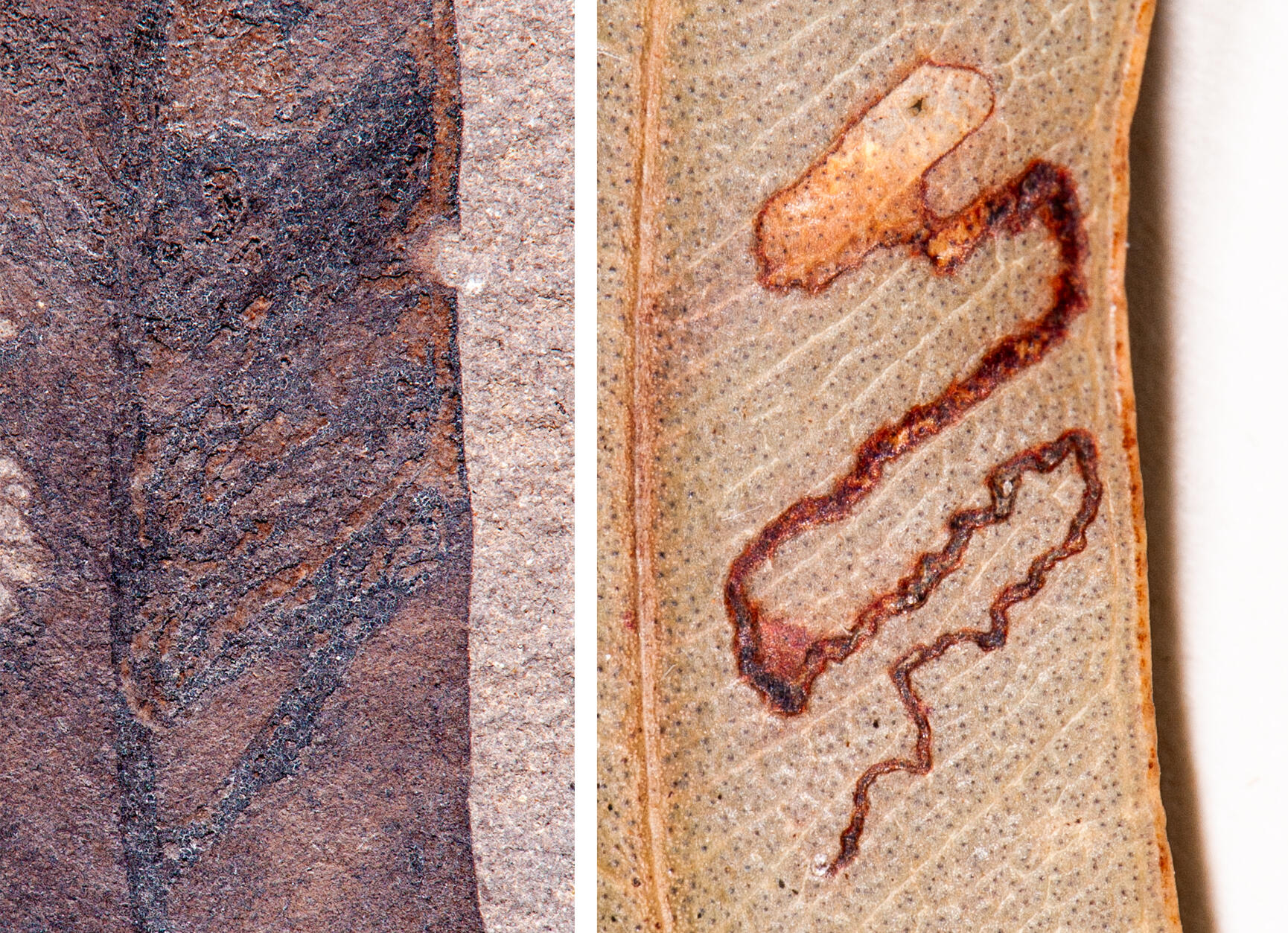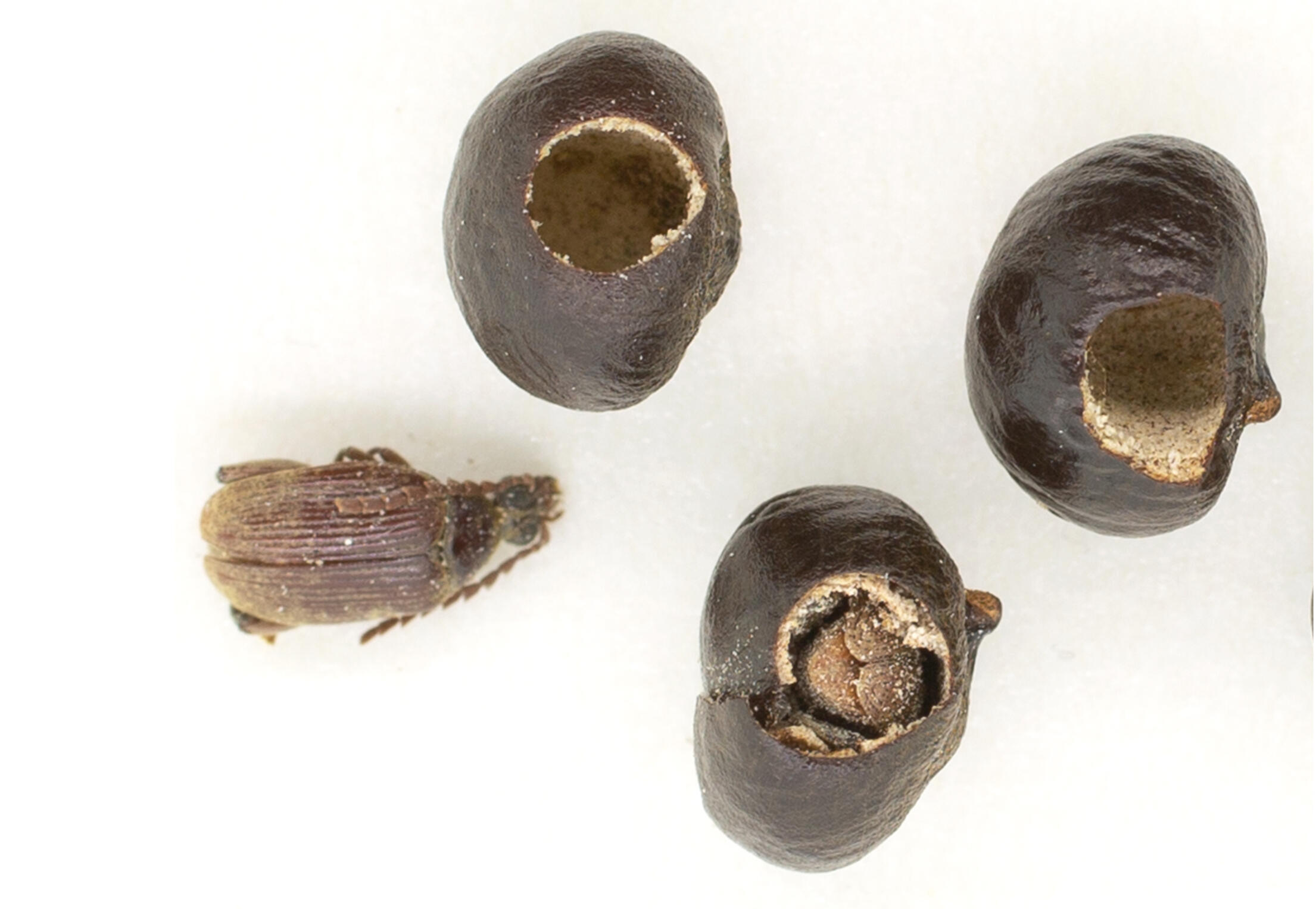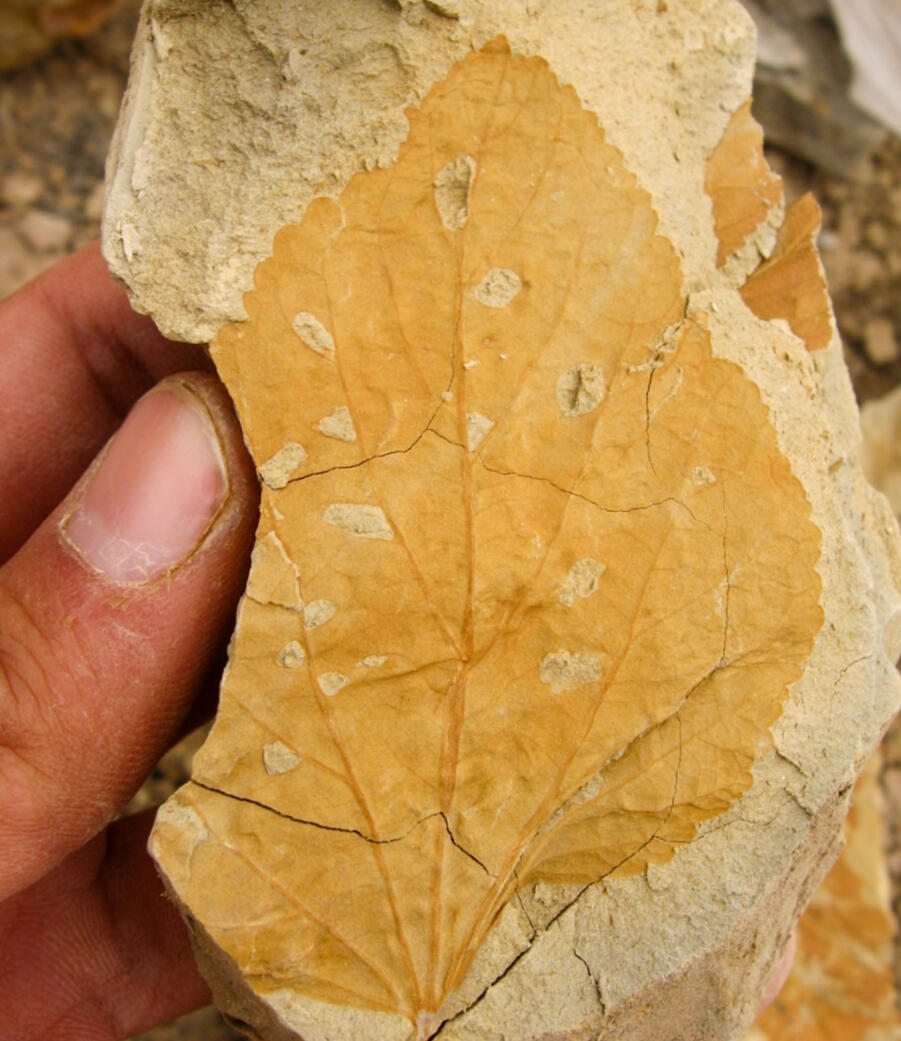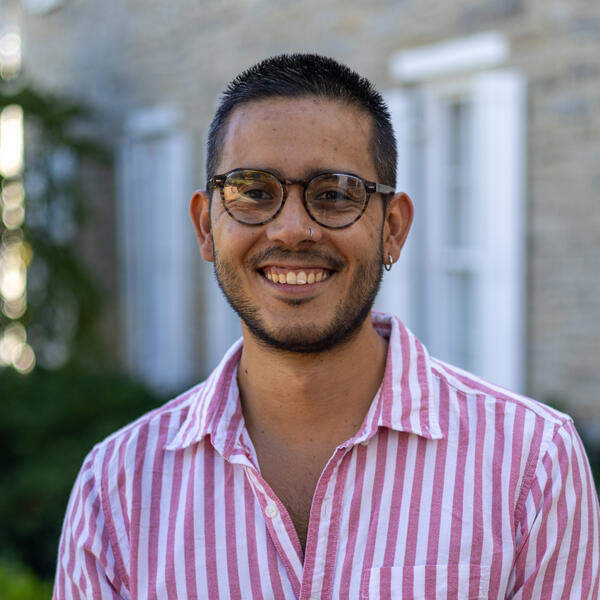
L. Alejandro Giraldo
Ph.D. Candidate
Department of Geosciences, The Pennsylvania State University
[email protected]
Research
Welcome! I’m Alejo, a Ph.D. candidate in Geosciences at The Pennsylvania State University working with Dr. Peter Wilf. My research explores the evolution and assembly of rainforests, with a focus on paleobotany and plant-insect interactions.Through field and museum-based research across the Americas, Australia, and Southeast Asia, I investigate fossil floras and insect herbivory to uncover deep-time biogeographic connections. I’m passionate about sharing science through teaching, mentorship, and outreach.
About
I had the fortune to be born and raised in Colombia, a country filled with lush, green forests. I remember going for long hikes with my siblings and being amazed by the forests, the dense mist that condensed in the bark of trees, the huge heart-shaped leaves (that I now know belong to the genus Xanthosoma) of the understory, and flowers and fruits of all colors. This appreciation for nature, passed down to me by my mom, left a big impression on me and became one of the main reasons I pursued a bachelor's degree in biology at the Universidad EAFIT.
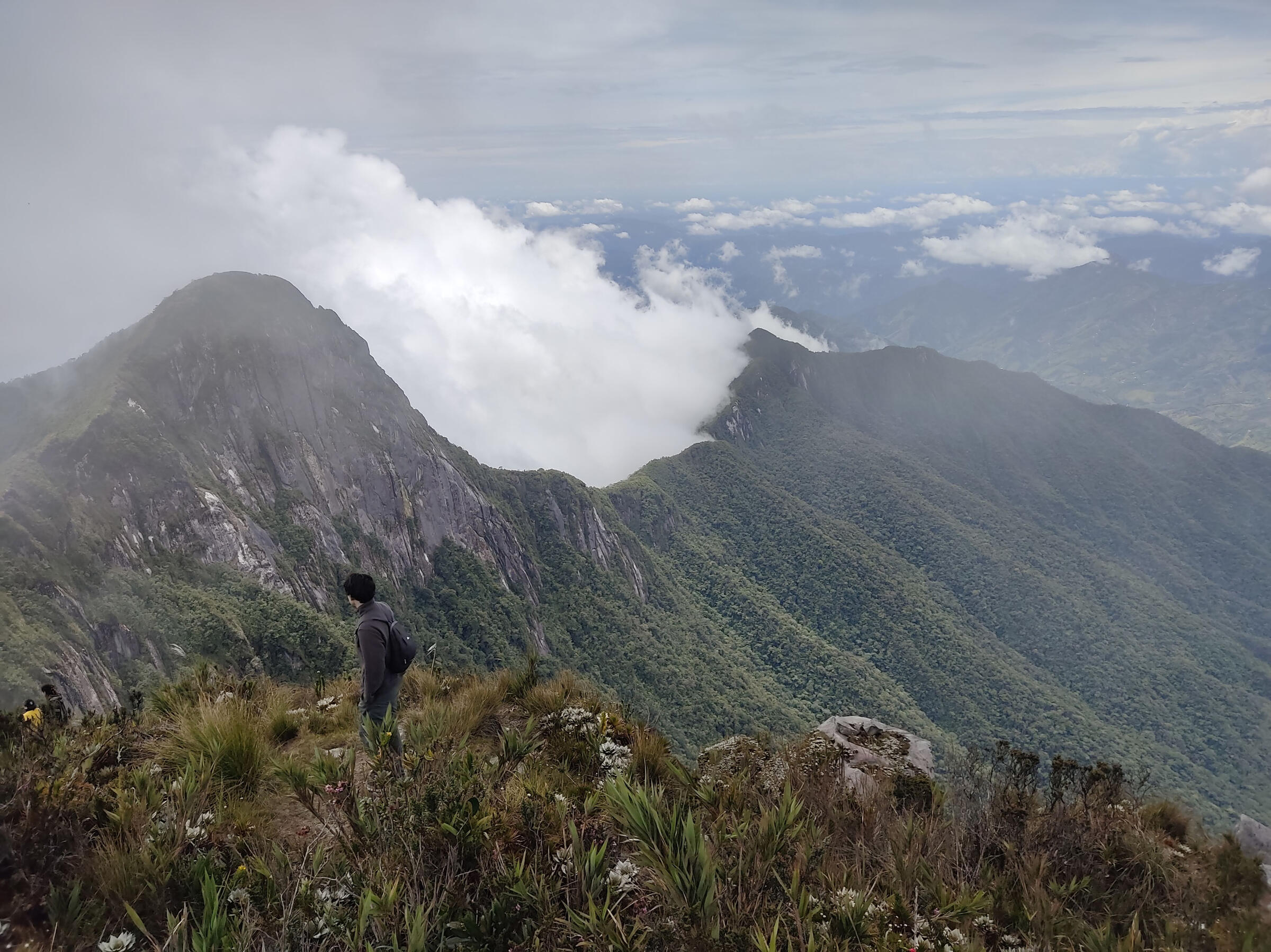
Páramo de Sonsón, Antioquia, Colombia
During the third year of my undergrad, I took a paleontology class and was immediately hooked. I did not even know there were such things as fossil plants! I was attracted to the weirdness of fossils and thinking in timescales that my brain still struggles to comprehend.For my undergrad thesis, and as a Short Term Fellow at the Smithsonian Tropical Research Institute, I studied the feeding traces that insects left on some of the earliest Neotropical rainforests; the closest we can get to reconstructing the ecology of plant-insect interactions 58 Ma in the past. I was mentored by Dr. Mónica Carvalho
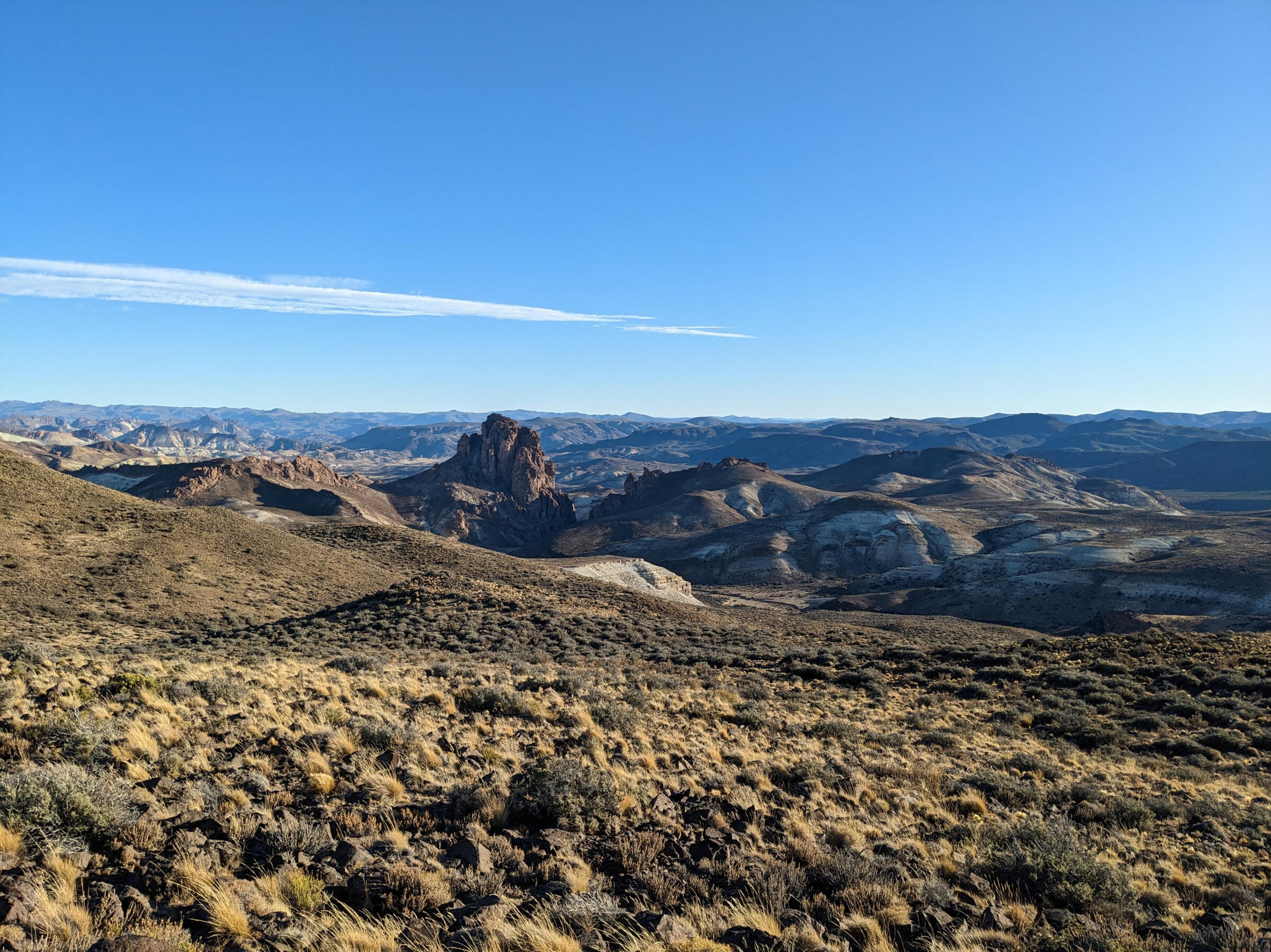
Laguna del Hunco, Chubut Province, Patagonia, Argentina
I then moved to the Pennsylvania State University to conduct a M.S. with Dr. Peter Wilf, testing whether the insect herbivore traces observed in 52 Ma Eucalyptus fossils from Patagonia coincide with those observed in extant gum trees.I stayed at Penn State for my Ph.D., and am currently working on describing plant fossils from the Eocene Anglesea flora of southeastern Australia, understanding the assembly of Australian rainforests through time, and testing the validity of morphological measurements of stomatal complexes to estimate humidity in deep time.Check my publications here
Publications
Also find them on Google Scholar and ResearchGate
Giraldo, L.A. (2025). Comparisons of insect and pathogen leaf damage on early Eocene Eucalyptus (Myrtaceae) from Patagonia and extant Australasian gum trees. PhytoKeys, 266, 177–217.Giraldo, L.A., Wilf, P., Donovan, M. P., Gandolfo, M. A. (2025). Fossil insect-feeding traces indicate unrecognized evolutionary history and biodiversity on Australia’s iconic Eucalyptus. New Phytologist, 245, 1762–1773.Spagnuolo, E. J., Giraldo, L. A., Coiro, M., Lydon S. (2024). Reconstructing the botanical past: art and paleobotany. Plant Science Bulletin, 70, 264–276.Giraldo, L.A., Carvalho, M.R., Herrera, F., Labandeira, C.C. (2022). Ancient trouble in paradise: Seed beetle predation on coconuts from middle–late Paleocene rainforests of Colombia. Review of Palaeobotany and Palynology, 300, 104630.Giraldo, L.A., Labandeira, C., Herrera, F., Carvalho, M. (2021). Rich and Specialized Plant-Insect Associations in a Middle–Late Paleocene (58–60 Ma) Neotropical Rainforest (Bogotá Formation, Colombia). Ameghiniana, 58, 75–99.

Fossil mine on a 52 Ma Eucalyptus fossil from Patagonia (left) and extant analog on Eucalyptus major from Australia. Click image for link to paper.

Bruchine beetles (Caryobruchus gleditsiae) boring palmetto (Sabal mauritiformis) fruits. Click image for link to paper.

Fossil leaf from the Bogotá Fm (58–60 Ma) with insect chewing marks. Click image for link to paper.
Teaching philosophy
I thoroughly enjoy teaching and have always thought that it's the best chance for me to learn more about a topic. I strive to make my teaching approachable and simple; if I truly understand a topic, I should be able to explain it in simple terms.I also think that teaching is a two-way street. Students learn from me and, in turn, they challenge my assumptions, ask questions I hadn’t considered, and offer fresh perspectives that often lead to new research insights. Each semester brings new challenges that require me to refine my approaches—adjusting explanations for different learning styles, incorporating new research findings, or developing innovative lab exercises. This constant evolution keeps me engaged and ensures my teaching remains current and effective.In my Geobiology labs, I've found that having students physically handle fossil specimens while discussing deep time concepts creates more lasting understanding than traditional lecture-based approaches. I intentionally blend hands-on activities with conceptual discussions to maximize student engagement and retention.I gauge my effectiveness not just through student evaluations, but by observing students’ ability to synthesize information across disciplines and apply critical thinking skills to new problems.I have been a TA since the second year of my undergrad and am confident that these teaching experiences have made me a better scientist overall.******************************************************************I have taught the lab component of classes like Botany and Plant Systematics, Plant Physiology, Earth History, and Geobiology.Additional details about my teaching experience can be found in my curriculum vitae.
GEOSC 204 - Geobiology (Last Update SP25)
For students in GEOSC-204 (Geobiology), please click here to be redirected to a Google Drive folder with the lab materials. This includes handouts, power point presentations, and associated files for the lab component of the class.For anyone else that might find these resources useful, you're welcome to use them! Science is better when shared. If you find these materials useful, I simply ask that you acknowledge their source, as I've invested considerable time in making these labs engaging, interactive, and pedagogically effective.
CV
To download my full cv click here
Mentoring
I very much enjoy the opportunity to mentor students. My approach is always personalized—whether through online or in-person meetings, collaborative problem-solving, or supporting independent exploration, I strive to match my guidance to each mentee’s communication and learning style. I view mentoring as a reciprocal process, much like teaching, where both mentor and mentee learn from each other and grow together.During my time at The Pennsylvania State University, I have had the privilege to mentor outstanding undergraduate students, including:Emerson O' Niell, 3rd year undergaduate (Fall 2025–Present) –Currently doing research for some of my projects until we figure out what she wants to work on!Alexandra Miller, 4th year (Fall 2023–Present) –Currently preparing her honor's thesis, presented at MPC 2025.Pj Przybylski (Summer 2023–Present), BSc. Geobiology –Currently preparing a paper based on their honor's thesis, which they presented at MPC2024 (and won the best poster award!) & MPC2025
